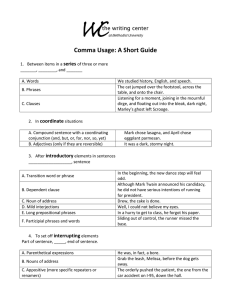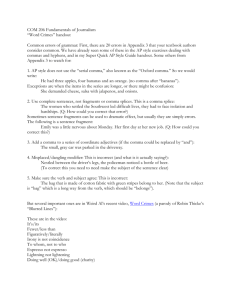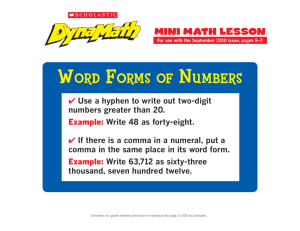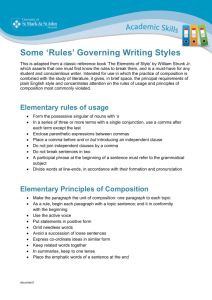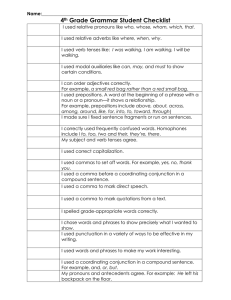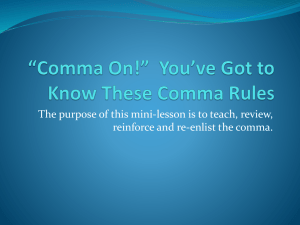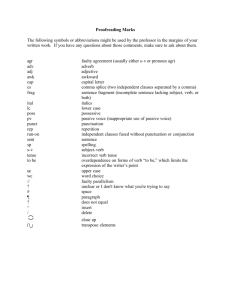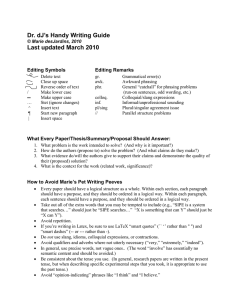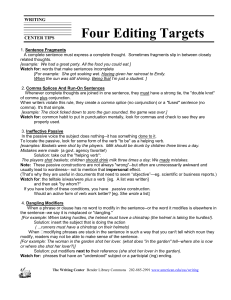Homework and Class Work for ENG 100B Wednesday, Nov. 7, 2012
advertisement
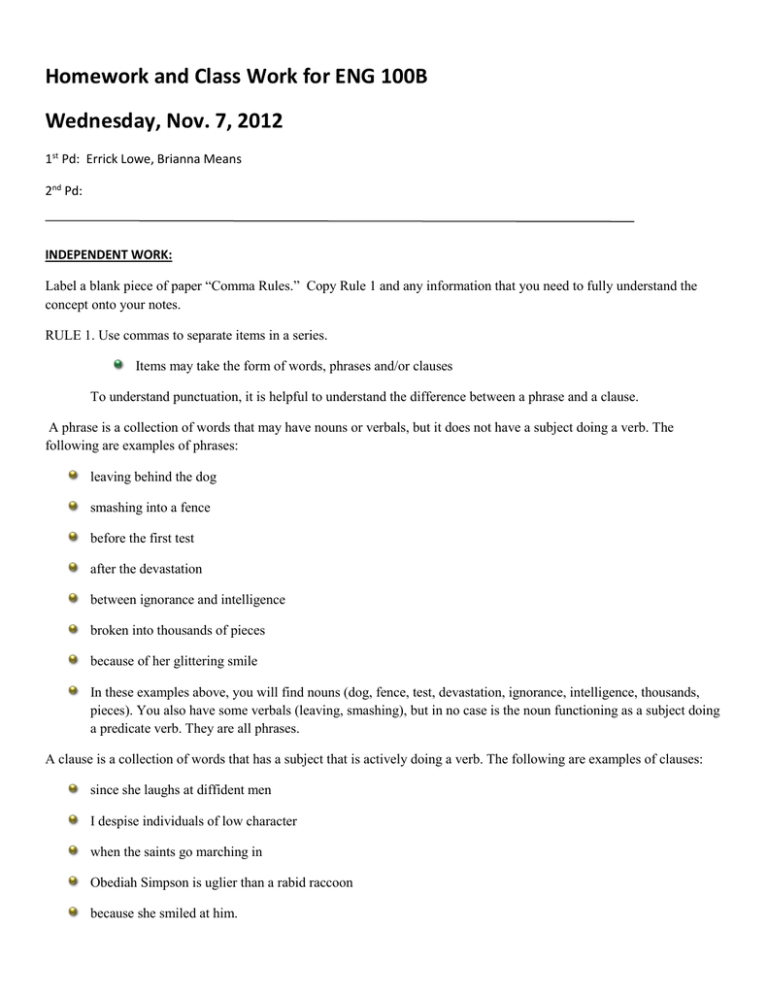
Homework and Class Work for ENG 100B Wednesday, Nov. 7, 2012 1st Pd: Errick Lowe, Brianna Means 2nd Pd: INDEPENDENT WORK: Label a blank piece of paper “Comma Rules.” Copy Rule 1 and any information that you need to fully understand the concept onto your notes. RULE 1. Use commas to separate items in a series. Items may take the form of words, phrases and/or clauses To understand punctuation, it is helpful to understand the difference between a phrase and a clause. A phrase is a collection of words that may have nouns or verbals, but it does not have a subject doing a verb. The following are examples of phrases: leaving behind the dog smashing into a fence before the first test after the devastation between ignorance and intelligence broken into thousands of pieces because of her glittering smile In these examples above, you will find nouns (dog, fence, test, devastation, ignorance, intelligence, thousands, pieces). You also have some verbals (leaving, smashing), but in no case is the noun functioning as a subject doing a predicate verb. They are all phrases. A clause is a collection of words that has a subject that is actively doing a verb. The following are examples of clauses: since she laughs at diffident men I despise individuals of low character when the saints go marching in Obediah Simpson is uglier than a rabid raccoon because she smiled at him. RULE 1 A: Do not place a comma before or after a series. INCORRECT I enjoy, gymnastics, basketball, wrestling, and football. CORRECT I enjoy gymnastics, basketball, wrestling, and football. EXCEPTION The abbreviation etc. is always followed by a comma unless it occurs at the end of a sentence. EXAMPLE Randy bought hamburger, buns, onions, etc., for the cookout. RULE 1B: When the word and, or, or nor joins the last two items in a series, the comma before the conjunction is sometimes omitted. Never omit the final comma, however, if such an omission would make the sentence unclear. This is often called an Oxford Comma. UNCLEAR Mother, Father and Uncle Matt went to town. [How many people went to town, two or three? Is Mother being addressed or enumerated?] CLEAR Mother, Father, and Uncle Matt went to town. Note: Words customarily used in pairs are set off as one items in a series: pancakes and syrup, bread and butter, profit and loss, hat and coat, pork and beans, etc. EXAMPLE Breakfast at the inn consists of orange juice, ham and eggs, toast, and coffee. CLASSWORK: 1. Pre-reading Activity (to prepare for paper to be assigned on Friday): Take 10 minutes to write in response to the following prompt: Describe your relationship with reading and writing. Talk about your likes, dislikes, etc., and why you feel the way you do. 2. View the following video: http://www.youtube.com/watch?v=vKG698U2Mvo. 3. Pull the handout from the first trimester of class entitled, “Critical Reading Toward Critical Thinking.” Re-read. The five questions under the section called “How Do I Read Looking for Ways of Thinking” will be the five questions you will answer in the Critical Thinking section of the Reading Response Journal that will be completed after each section of reading in the book Now You See It . . .
